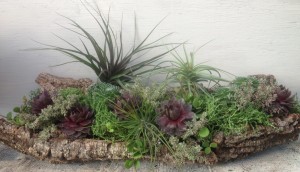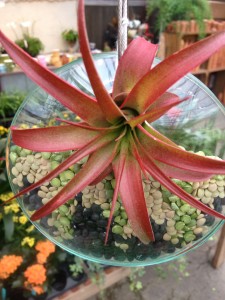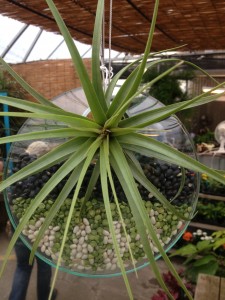Tillandsia or air plants, are very cool indoor plants and the largest genus in the bromeliad family. They’re considered epiphytes, absorbing moisture and nutrients through the air, using plants or other structures as support.
Like other bromeliads, their life cycle ends after blooming, but new plants, called pups, form around the base of the plant. They do not require soil to live – the roots help them to attach to a host, whether it be on a plant, tree or piece of wood. They are not parasitic, meaning they won’t harm the host plant, rather, they use it as a support, taking nutrients from the air and water you supply.
.
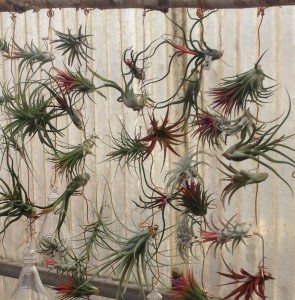
hanging air plants…
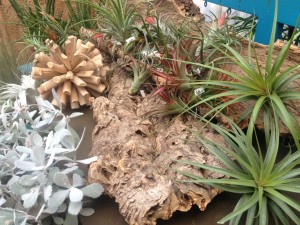
air plants – we think they will look great attached to the bark pieces here!
There are tillandsias with rather stiff, gray or faded leaves and those with softer, greener foliage. As a rule, the stiffer leaved, gray ones will need more light but less water – and those with softer, greener leaves tolerate lower light levels but appreciate more moisture.
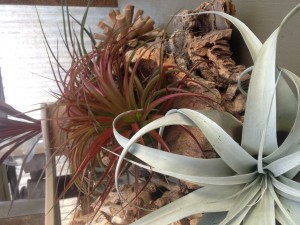
look at the contrast in colors here!
In their native habitat, tillandsias live on trees, so they get light, but it’s diffused through the canopy. Try to emulate this in your home, giving them strong, but indirect light (not right in a window, as that could burn the foliage and cause it to dry out faster too) or place them outside through the summer, in a shady spot, or at most a location with morning sun and dappled light.
As noted, the gray leaved tillandsias need less water than the softer leaved green ones but when you water ((roughly once a week), take them to your sink and water thoroughly, shake the excess moisture off (you don’t want water ever sitting in their base) and return them to their home. They need to dry out between watering. If they get too dry, they’ll have curled or rolled leaves that look shriveled – you don’t want them to get to that point!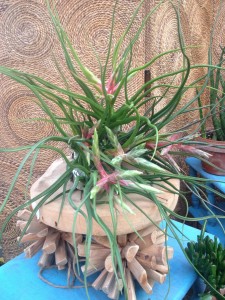
If you display them outside, bring them indoors for the winter when temps drop below 40 degrees. Don’t worry about fertilizing – they are susceptible to over feeding – best to leave well enough alone!
Stop in and take a look at these cool plants – we’re sure you can find somewhere to try one or two – they’re too fun not to!
If you follow us on Instagram or Facebook you’ve probably seen a new series of shop videos – if not, follow us and check them out! They’re also on our YouTube channel under Oak Street Garden Shop – if you’d like to see more, subscribe!
By Kris Blevons

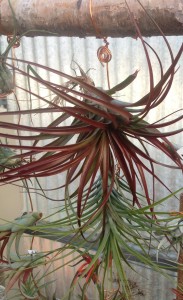
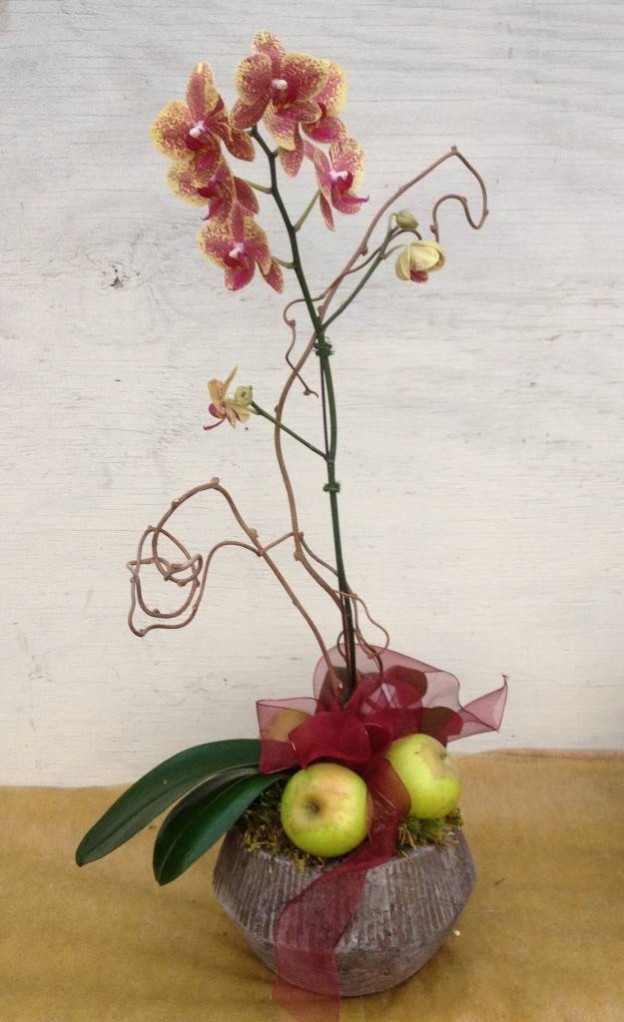
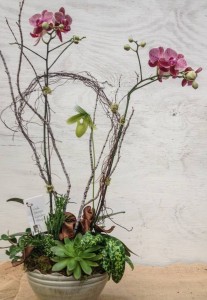
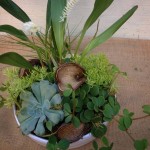 Someone who worked for us many years ago called from North Carolina to order an orchid for her mother’s birthday. She likes succulents too; so a double stemmed phalaenopsis and a lady slipper orchid were paired in a container and succulents nestled at the base. The addition of angelvine and a touch of brown ribbon complete the design.
Someone who worked for us many years ago called from North Carolina to order an orchid for her mother’s birthday. She likes succulents too; so a double stemmed phalaenopsis and a lady slipper orchid were paired in a container and succulents nestled at the base. The addition of angelvine and a touch of brown ribbon complete the design.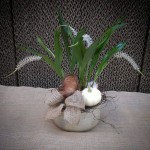

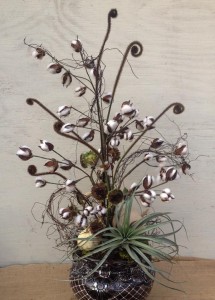 This is just a sampling of the early fall things we’ve been creating! Since we’re always searching for new ideas and ways to make our arrangements more interesting and unique, who knows what we’ll come up with next…
This is just a sampling of the early fall things we’ve been creating! Since we’re always searching for new ideas and ways to make our arrangements more interesting and unique, who knows what we’ll come up with next…
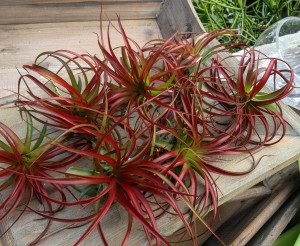

 Because succulents, air plants and even
Because succulents, air plants and even 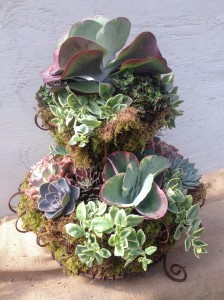
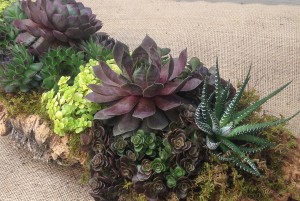
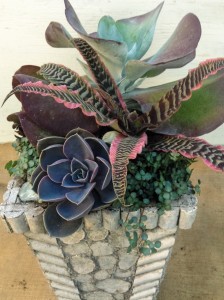
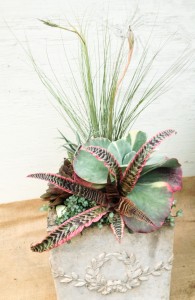
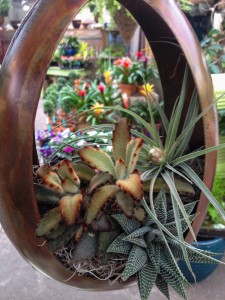
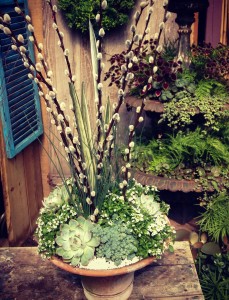
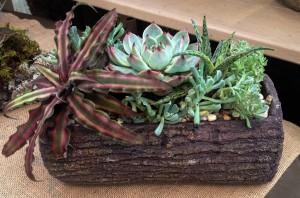
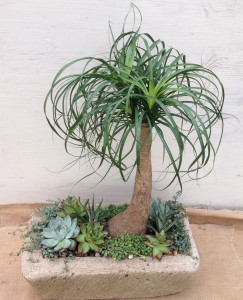
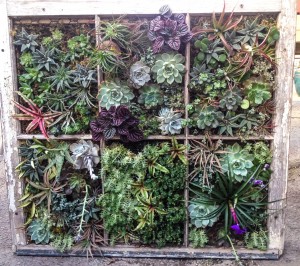
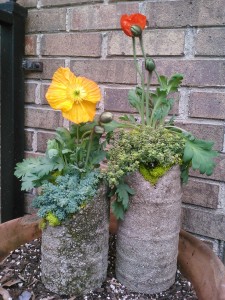

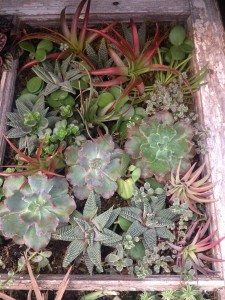
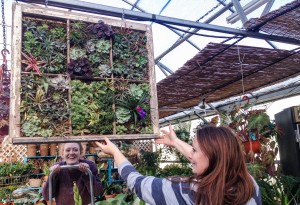
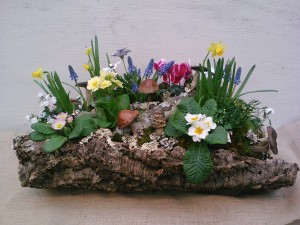
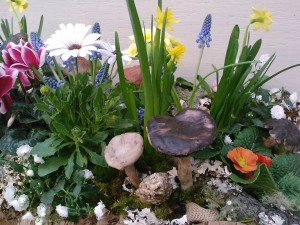 Now that January is behind us, we can look forward to spring, knowing it is right around the corner. Until then, we’ve been satisfying our planting urges using late winter offerings from growers. We are determined to come up with something interesting on long winter days in the greenhouse!
Now that January is behind us, we can look forward to spring, knowing it is right around the corner. Until then, we’ve been satisfying our planting urges using late winter offerings from growers. We are determined to come up with something interesting on long winter days in the greenhouse!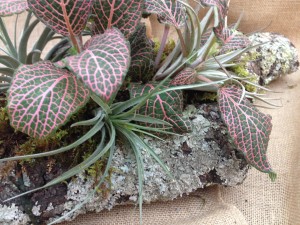
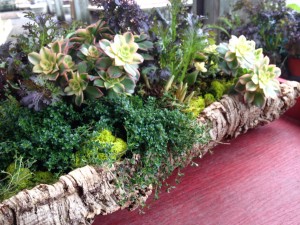
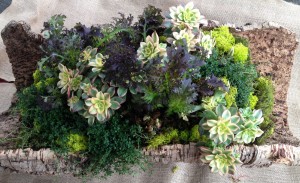 Many of the succulent aeoniums fare better here during the winter months. They seem to dislike our excessive summer humidity (Don’t we all?), and the Aeonium ‘Kiwi’ seemed just right to work into some sort of arrangement. I loved how they looked paired with this frilly dark purple leaf ornamental mustard. If I could just work it into a container that could be moved in and out easily if temperatures dropped below freezing…
Many of the succulent aeoniums fare better here during the winter months. They seem to dislike our excessive summer humidity (Don’t we all?), and the Aeonium ‘Kiwi’ seemed just right to work into some sort of arrangement. I loved how they looked paired with this frilly dark purple leaf ornamental mustard. If I could just work it into a container that could be moved in and out easily if temperatures dropped below freezing…

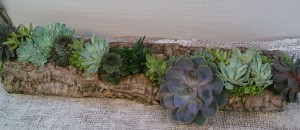 These cork bark pieces are so organic and natural…we love them and wanted to pass on just a couple of ideas for planting them. Actually, they were one of those happy accidents – one wrong stroke of the keyboard, with a different item number ordered than planned, and, voila, these cork bark pieces arrived the other day that were rounded, with just enough space for planting rather than being flat…oh, happy day!
These cork bark pieces are so organic and natural…we love them and wanted to pass on just a couple of ideas for planting them. Actually, they were one of those happy accidents – one wrong stroke of the keyboard, with a different item number ordered than planned, and, voila, these cork bark pieces arrived the other day that were rounded, with just enough space for planting rather than being flat…oh, happy day!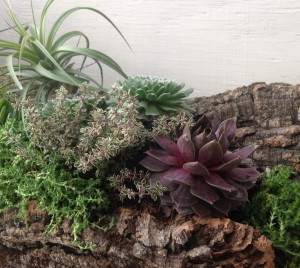 Of course, if you’ve been keeping up with previous posts, you know we’ve gotten in some pretty cool looking succulents, as well as air plants and the beginning of the new season’s herb offerings. So, with all this bounty to work with, one bark planter became a succulent, herb, airplant design and the other became a study in silvery grays and blues with a pop of chartreuse…
Of course, if you’ve been keeping up with previous posts, you know we’ve gotten in some pretty cool looking succulents, as well as air plants and the beginning of the new season’s herb offerings. So, with all this bounty to work with, one bark planter became a succulent, herb, airplant design and the other became a study in silvery grays and blues with a pop of chartreuse…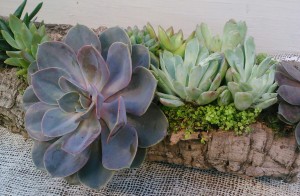
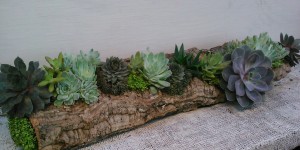 As with any combination planting, look at color, texture and form of the plants you’re working with. The bark is rough and brown…in one planting the red coloring of the hens and chicks play off the brown of the planter while the red edging of the thyme also picks up the color of the succulents. The spiky air plants contrast with the rounded forms of the rolled bark as well.
As with any combination planting, look at color, texture and form of the plants you’re working with. The bark is rough and brown…in one planting the red coloring of the hens and chicks play off the brown of the planter while the red edging of the thyme also picks up the color of the succulents. The spiky air plants contrast with the rounded forms of the rolled bark as well.